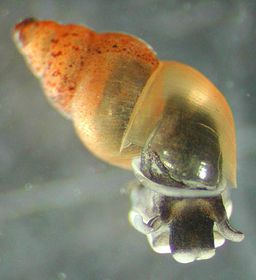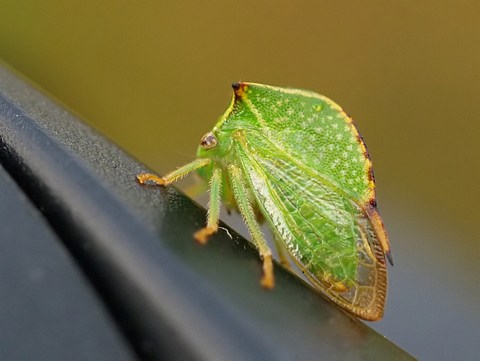 |
n/a | Status LU: established. 1st record: ? |
 |
n/a | Status Eur.: established. 1st record: ~2000 (NL). |
 |
n/a | RA: ISEIA: C2. Harmonia+: n/a. |
 |
Namenloser Rückenkanker | Wikipedia:    | Wikispecies: n/a (2020) | Wikispecies: n/a (2020) |
 |
n/a | Back to the list of invertebrates |
Contents
Brief description
 Since probably 2000, a completely unknown harvestman started its quick expansion through Central Europe. The species could be classified in the genus Leiobunum, but is different from other European species. It has been named provisionally as Leiobunum sp. (sensu Wijnhoven et al. 2007). It is assumed that it arrived with ships from overseas, probably reaching the Netherlands first. It is still unknown exactly where it came from (Wijnhoven et al. 2007).
Since probably 2000, a completely unknown harvestman started its quick expansion through Central Europe. The species could be classified in the genus Leiobunum, but is different from other European species. It has been named provisionally as Leiobunum sp. (sensu Wijnhoven et al. 2007). It is assumed that it arrived with ships from overseas, probably reaching the Netherlands first. It is still unknown exactly where it came from (Wijnhoven et al. 2007).
The area of origin is unknown to date, since about 2000 the species has probably spread from the Netherlands into Western Germany on both sides of the Rhine valley to Switzerland and Vorarlberg (Wijnhoven et al. 2007), in the meantime also to Schleswig-Holstein (Staudt 2012).
Habitat: Primarily possibly a rock dweller, in Europe in habitats of anthropogenic origin: industrial wastelands, ruins and house walls (Wijnhoven et al. 2007). Leiobunum sp. generally tend to cluster together during the day. This behaviour is even more pronounced in the species in question. Mass aggregations of several hundreds of individuals have been observed. Many observations show that in spite of its high reproduction rate this “new” Leiobunum sp. seems to coexist well with indigenous species and integrates in the native fauna without great damage. But surely great colonies of the species compete for food with other similar predators.
Status and distribution in Luxembourg
No records of Leiobunum sp. (sensu Wijnhoven et al. 2007) are present in the MNHNL-mdata portal (MNHNL, iNaturalist & GBIF, 2020).
Already widespread in the Gutland, Leiobunum sp. still largely absent in the Ösling (Muster & Meyer 2014: 79). In Luxembourg exclusively synanthropic, larger aggregations have so far only been observed on industrial ruins in the Minette area, in small numbers of individuals in many places on average house walls.
Remarks (Muster & Meyer 2014: 82): Due to the occurrence of mass aggregations with > 1000 specimens the species became the focus of media and sensation-hungry public after 2007. Suddenly, weavers were the focus of exhibitions, local publications, radio and television broadcasts. Wijnhoven et al. (2007) also warned urgently of an imminent invasion of unprecedented proportions and possible dramatic effects on the native opilionid fauna. A few years after this initial uncertainty, the situation is now much more relaxed. Despite the now widespread distribution in Luxembourg, no mass increases could be registered. Only in the former Goodyear test site near Esch-sur-Alzette and at industrial ruins near Rodange larger colonies of 100-200 specimens were sighted. Otherwise only smaller groups of maximum 10 specimens were observed, often only single specimens. It was noticeable that often only one dwelling house per small village was inhabited, while other similar houses remained unoccupied. In this context, observations from the Ruhr area seem interesting, according to which the animals show a preference for calcareous surfaces rich in structure (Toss 2010). The effects on other weaver’s apprentice species are also likely to be less severe than originally assumed. Leiobunum rotundum is often found at or even within aggregations of the Nameless Spine Anchor, while they even seem to evade Dicranopalpus ramosus (Wijnhoven 2011).
Risk assessment
ISEIA protocol
C2 (2+2+2+1) (Ries et al. 2017: 68).
Harmonia+ protocol
Not assessed yet.
Bibliography
- MNHNL, iNaturalist & GBIF, 2020. MNHNL-mdata, online portal combining species observation from Recorder-Lux, iNaturalist and GBIF. National Museum of Natural History, Luxembourg. URL: https://mdata.mnhn.lu [Accessed 2020-03-05]
- Muster, C. & M. Meyer, 2014. Verbreitungsatlas der Weberknechte des Großherzogtums Luxemburg, Ferrantia 70. Musée national d’histoire naturelle, Luxembourg, 112 S. [pp. 79-82] (PDF 3.8 MB)
- Ries, C., A. Arendt, C. Braunert, S. Christian, A. Dohet, A. Frantz, G. Geimer, M. Hellers, J. A. Massard, X. Mestdagh, R. Proess, N. Schneider & M. Pfeiffenschneider, 2017. Environmental impact assessment and black, watch and alert list classification after the ISEIA Protocol of invertebrates in Luxembourg. Bull. Soc. Nat. luxemb. 119: 63-70. [PDF 360 KB]
- Staudt, A., 2012. Nachweiskarten der Spinnentiere Deutschlands (Arachnida: Araneae, Opiliones, Pseudoscorpiones). http://www.spiderling.de/arages/
- Toss, K., 2010. Auffällig unauffällig: Der bislang unbestimmte Weberknecht der Gattung Leiobunum ist im westlichen Ruhrgebiet weit verbreitet. Elektronische Aufsätze der Biologischen Station Westliches Ruhrgebiet 19: 1-5.
- Wijnhoven, H., A.L. Schönhofer & J. Martens, 2007. An unidentified harvestman Leiobunum sp. alarmingly invading Europe (Arachnida: Opiliones). Arachnol. Mitt. 34: 27-38. (https://www.natur-in-nrw.de/Download/Martens_Leiobunum_2007.pdf)
Page content last updated on 2020-03-05. Last proofread by Caroline Grounds on 2019-12-10.


























